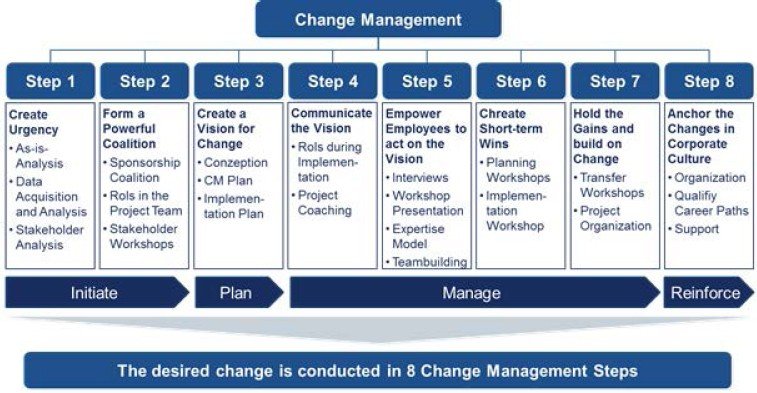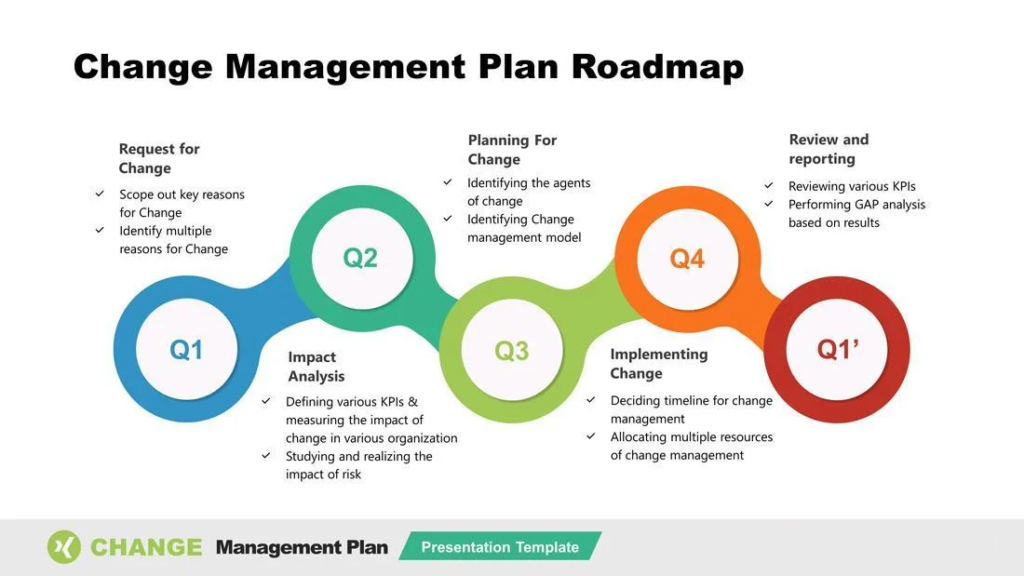Creating an effective change management plan is essential for businesses to navigate through transitions smoothly and successfully. This comprehensive guide will delve into what a change management plan template should include, how to implement it, and best practices for ensuring its success. With around 2,500 words, this article will cover various aspects of change management, making it a valuable resource for leaders, managers, and anyone involved in organizational change.
Introduction to Change Management
Change management is a structured approach to transitioning individuals, teams, and organizations from a current state to a desired future state. It is critical in helping organizations overcome resistance to change, enabling them to achieve and sustain benefits. As businesses face continuous technological advancements, regulatory changes, and evolving market conditions, effective change management becomes essential.
Check out Agile Project Plan Template Excel as a Related Template.
Understanding the Need for a Change Management Plan
A change management plan provides a blueprint for managing change effectively. It outlines the steps necessary to ensure that changes are smoothly and successfully implemented to achieve lasting benefits. The primary objectives of a change management plan include:
- Minimizing resistance to change: By involving stakeholders early and ensuring there is clear communication.
- Ensuring a smooth transition: By detailing every step of the implementation process.
- Maximizing benefits and value: By aligning changes with business goals and objectives.
Related Content: Gantt Chart in Project Planning

Key Components of a Change Management Plan Template
A comprehensive change management plan template should include several key components to guide the change process effectively:
- Change Management Team: Identifying the leaders and stakeholders involved in the change process.
- Objectives and Outcomes: Clearly defining the goals of the change initiative.
- Scope of Change: Detailing the areas of the organization that will be affected.
- Stakeholder Analysis: Identifying and analyzing stakeholders affected by the change.
- Communication Strategy: Developing a plan to communicate the change to all stakeholders.
- Training and Support Plans: Ensuring that all individuals have the necessary information and support.
- Timeline and Milestones: Establishing a realistic timeline for the change process.
- Risk Mitigation: Identifying potential risks and developing strategies to mitigate them.
- Feedback Mechanisms: Implementing systems to gather feedback and manage concerns.
- Evaluation and Adaptation: Methods for assessing the success of the change and making necessary adjustments.
Related Article: Project Implementation Plan Template
Developing a Change Management Plan
Define the Change and Its Scope
Before drafting a change management plan, it is crucial to clearly define the change and understand its impacts. This involves identifying the change’s purpose, the areas of the business it will affect, and the objectives it aims to achieve.
Assemble a Change Management Team
A dedicated change management team should be assembled to oversee the process. This team should include leaders who are influential, have a deep understanding of the change, and are capable of motivating others.
Related Template: Project Documentation Template Excel
Conduct a Stakeholder Analysis
Identifying all stakeholders affected by the change is crucial. This analysis helps in understanding their needs, concerns, and how the change will impact them. Effective strategies can then be developed to engage stakeholders and gain their support.
Develop a Communication Plan
Effective communication is essential in change management. The communication plan should detail what will be communicated, through what channels, at what frequency, and by whom. It should address all stakeholders’ concerns and provide a clear picture of the change.
Plan for Training and Support
Training and support are vital for ensuring everyone understands their roles in the change process. The plan should include training sessions, resources, and support systems to help stakeholders adapt to the change.
Related Content: Quality Control Plan Construction Template
Establish a Timeline and Set Milestones
A realistic timeline for the change process should be established, along with specific milestones. This helps in tracking progress and maintaining momentum throughout the change process.
Implement Risk Management Strategies
Identifying potential risks and developing mitigation strategies is critical. This step involves predicting what might go wrong and planning how to handle it effectively.
Create Feedback Mechanisms
Feedback mechanisms should be implemented to gather insights from stakeholders during the change process. This feedback is crucial for making adjustments and addressing concerns promptly.

Evaluate and Adapt
Finally, the effectiveness of the change management plan should be evaluated. This involves assessing whether the change objectives were met and how the change has been integrated into the organization. Necessary adjustments should be made based on feedback and outcomes.
Download: Performance Improvement Plan Template
Best Practices for Change Management
- Engage leaders and stakeholders early: Early involvement can help in gaining support and reducing resistance.
- Maintain clear and open communication: Keeping everyone informed helps to align stakeholders with the change.
- Empower employees: Encouraging active participation can lead to more effective and sustainable change.
Related Article: Strategy & Action Plan Template
Conclusion
Implementing a well-structured change management plan is vital for successful organizational change. By following the steps outlined in this guide and adapting the template to specific organizational needs, businesses can achieve smooth transitions and improved outcomes. Change management is not just about following a plan; it’s about adapting to each situation and continuously improving.
This comprehensive guide not only assists in creating an effective change management plan but also provides insights into executing it successfully, ensuring that the organization can thrive in a constantly changing environment.
For Premium Templates, Please visit ProjectPlanExcel.net
